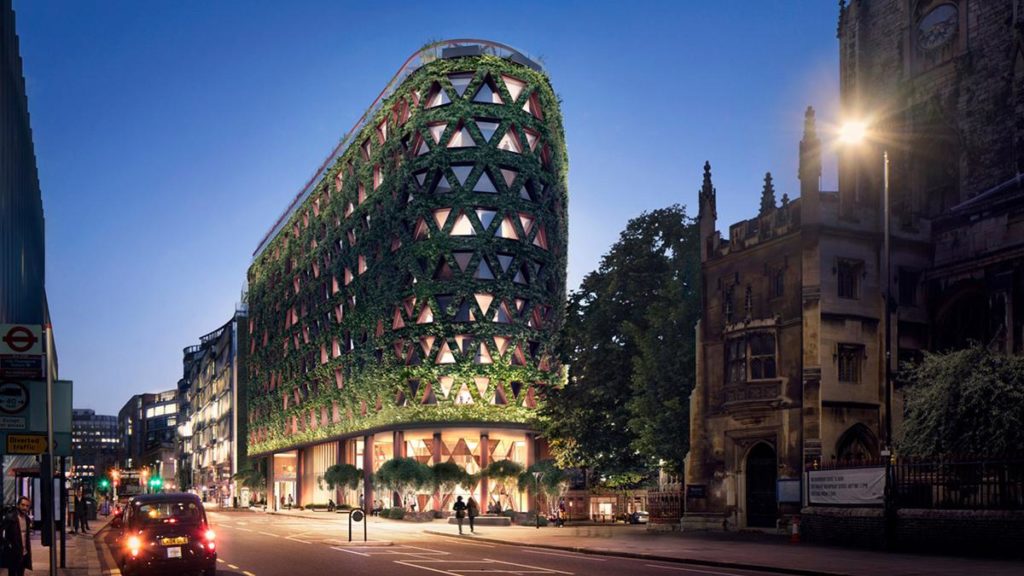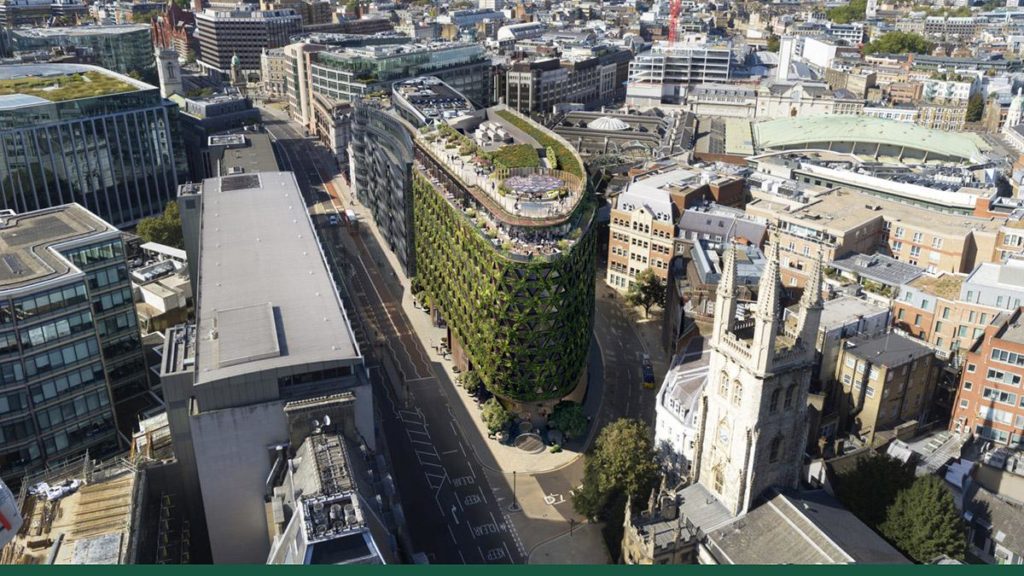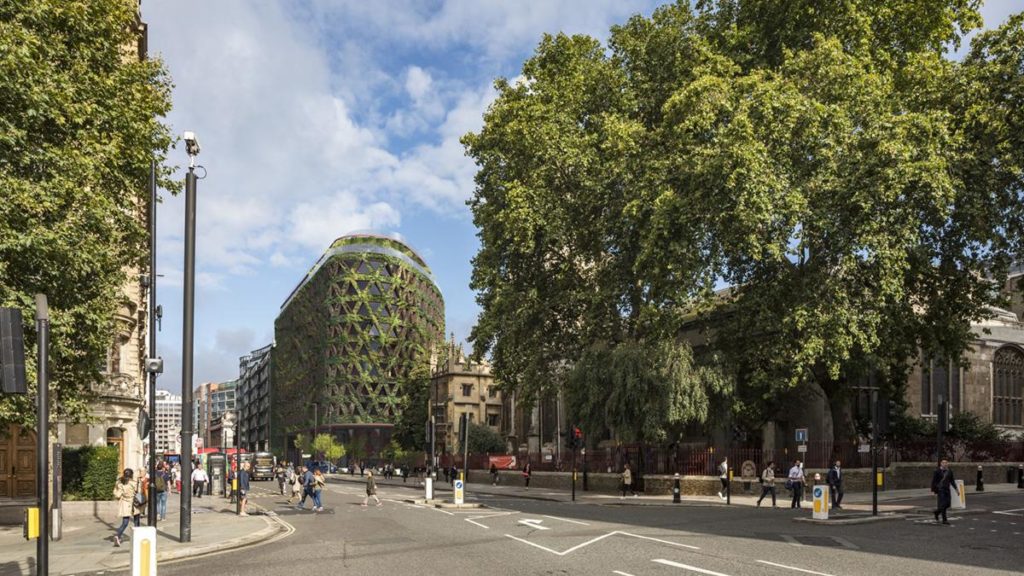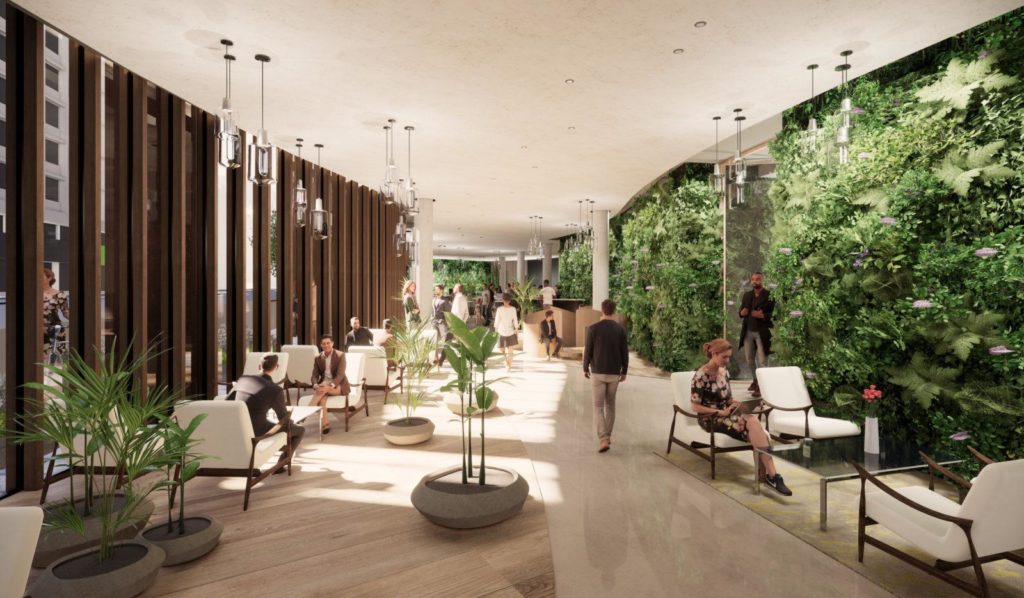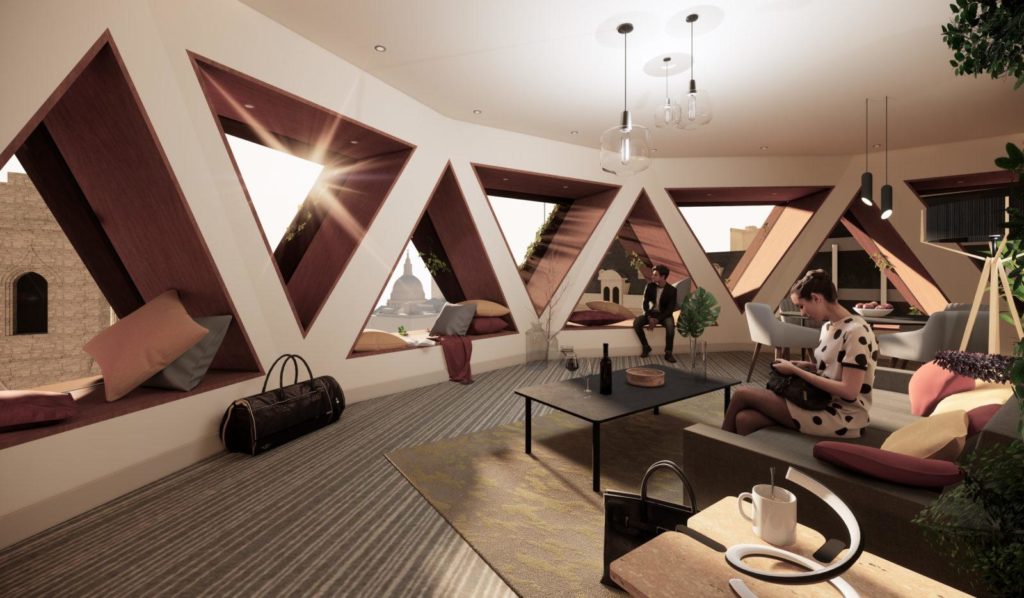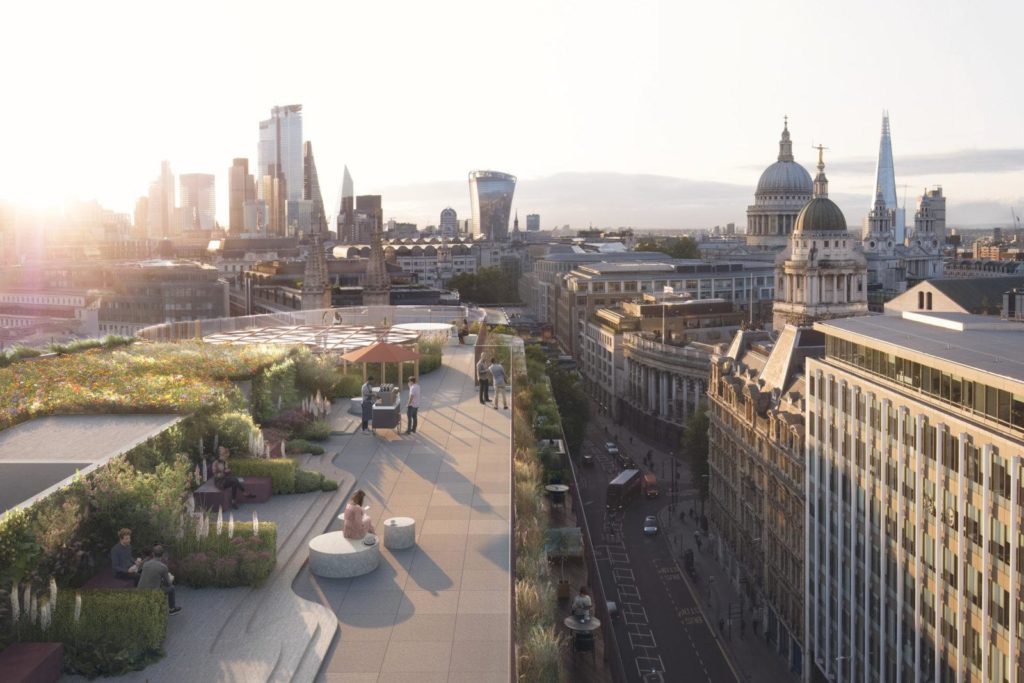London: home to the largest green façade in Europe
Leafy walls are currently attracting quite a bit of attention in cities all over Europe. As usual, however, London wants to go even further and claim the largest green façade anywhere in Europe. There are lots of little special effects…
One thing is certain: Austria – and Vienna in particular – can be justly proud of its track record on the sustainability front. It was only recently that the capital was singled out by lastminute.com as one of the five most sustainable cities in Europe. Besides criteria such as organic farming, CO2 emissions and the proportion of green space, this ranking also included projects such as the green façade of the MA48 municipal department offices on Vienna’s main road Wiener Gürtel.
Green showcase project?
Perhaps it was even this ranking and the exemplary nature of this building that prompted London City Council to grant planning permission for a truly spectacular hotel project in the heart of its city. On behalf of the Dominvs Group, high-profile London architectural firm Sheppard Robson realized its vision of a unique five-star hotel in a prime position at Holborn Viaduct: an oval building with a façade that is virtually covered in greenery.
In practical terms, the outer shell of Citicape House – as the property is to be called – will consist of a total of 400,000 plants. This would set yet another European record as no other vertical greening has existed on this scale to date.
Largest green façade
As one would expect, the design team whipped up quite a media storm with their plans for the largest vertical green space on the continent. This was evidently not their main intention, however. Rather, as the architects and property developers are both at pains to emphasize, the focus was far more on the actual benefits.
And this aspect of the building is set to be every bit as impressive as its visual effect: every year, the building is expected to absorb over eight tonnes of carbon, produce six tonnes of oxygen and reduce the local temperature by between three and five degrees Celsius. The wall is also to be instrumental in improving local air quality by trapping around 500 kilograms of dust particles every year.
Incidentally, these are not fake figures dreamt up to create an environmentally friendly illusion, they actually have a solid scientific basis. The project is geared towards London’s “Urban Greening Policy”, which contains strategies for promoting more and better urban environmentalization. This policy in turn rates projects and measures independently based on the “Urban Greening Factor” (UGF), which can be seen as a concrete statement on a property’s environmentally friendly impact.
Green benefits with a scientific basis
And this planned new hotel is not merely a frontrunner. With a UGF of 1.37, Citicape House exceeds the required factor of 0.3 more than 45 times over! In this way, it raises the standards for future developments in the Greater London area before construction work has even begun.
Dan Burr, a partner at Sheppard Robson, explains the motivation for setting an ecological landmark: “On a site that is so prominent, there was a real drive to inject some fresh perspectives on how to grapple with some of London’s most urgent environmental issues, including air quality and noise and dust pollution.” Which, it must be said, has been achieved with flying colours.
Which will thankfully not be at the expense of future hotel guests, who will soon – construction work is due to begin shortly – have 382 stylish five-star rooms at their disposal. They will also have access to 40,000 square metres of working space, a sky bar on the tenth floor, conference and event rooms, a spa, a ground-floor restaurant and a co-working room.
The roof tops it all
As well as having the largest green façade in Europe, the hotel boasts a spectacular roof terrace. This not only gives visitors an unhindered view over the city’s rooftops, but also serves as the high point of the living wall, giving a new, idyllic home to endangered native wildflower species and bringing them to the attention of the general public.
Dan Burr: “The socially sustainable aspects are just as important to us. The publicly accessible spaces and a rich mix of uses allows the public to dwell into the evening and weekends, all directly adjacent to a major transport hub and following the sustainable development ethos.”
However, it remains to be seen whether this will be enough for London to join Vienna in the upper rankings of Europe’s most sustainable cities. In any case, now that the go-ahead has been given for this lavish project, the first seeds have definitely been sown.
Text: Johannes Stühlinger
Translation: Rosemary Bridger-Lippe
Images: Sheppard Robson Architects
